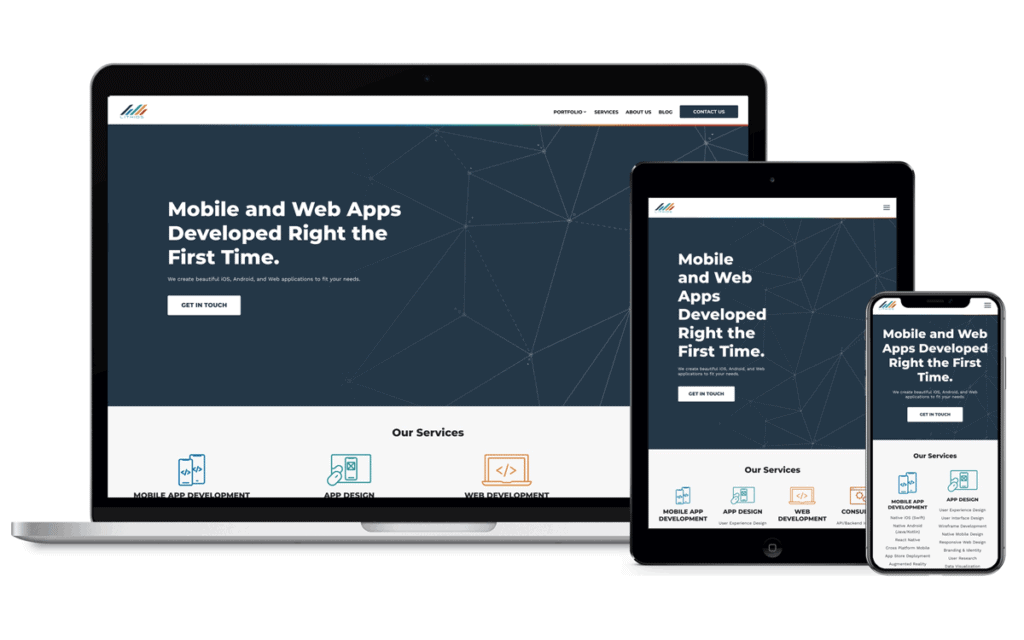How to Improve User Experience with Effective Web Design and Development
How to Improve User Experience with Effective Web Design and Development
Blog Article
In today's digital landscape, creating a website that offers a seamless and engaging user experience (UX) is critical to the success of any business. How users interact with your site can make or break their decision to stay, explore further, or convert into customers. Here is where web design and development play a crucial role in shaping that experience. You can ensure your website meets user needs and expectations by focusing on design and technical aspects. Here are key strategies to improve user experience with effective web design and development.
1.Responsive Design for Mobile and Desktop

A responsive design ensures that your site will adapt to different screen sizes, offering a consistent device experience. With mobile traffic surpassing desktop usage, a website that performs well on smartphones, tablets, and laptops is essential. They will likely leave content that requires pinching and zooming or dealing with slow-loading pages on mobile. By implementing responsive design, you provide a fluid user experience that retains visitors and encourages more extended site exploration, boosting engagement and conversions.
2.Fast Loading Times

User experience is highly dependent on speed. A slow-loading website can frustrate users, leading them to abandon the site. Research shows that if a website takes over three seconds to load, over 40% of visitors will leave. Improving loading times through image optimization, reducing unnecessary code, and using caching techniques are essential web development practices that directly impact UX. Faster websites create smoother interactions, keeping users engaged and satisfied.
3.Intuitive Navigation
A website's navigation should be straightforward, allowing users to find what they need quickly. More complex menus or cluttered layouts can be straightforward to visitors, leading to frustration and higher bounce rates. Effective web design and development prioritize intuitive navigation, ensuring users can quickly move between pages and access important information. Clear calls to action (CTAs), well-organized menus, and logical site architecture all contribute to a more enjoyable browsing experience.
4.Consistent Visual Design
Consistency in design elements such as fonts, colours, and button styles enhances usability and creates a cohesive brand image. Users who encounter consistent visual cues feel more comfortable navigating the site, leading to a better overall experience. Effective web design and development ensure that all pages have a unified look and feel, reinforcing your brand identity and helping users intuitively understand how to interact with your site. Consistent design eliminates confusion and contributes to a more streamlined user journey.
5.Accessible Web Design
Accessibility is critical to delivering a positive user experience for all visitors, including those with disabilities. By following web accessibility guidelines (such as WCAG), you ensure that your website is usable by people with visual, auditory, or motor impairments. Accessible features like alternative text for images, keyboard-friendly navigation, and proper contrast ratios improve UX, boost SEO, and widen your audience reach. Prioritizing accessibility in web design and development shows your commitment to inclusivity and enhances your site's overall performance.
6.User-Centered Content Layout
Content is the heart of your website, but how it's presented is just as important as the content itself. A user-centred content layout means organizing text, images, and multimedia in a way that's easy to digest. Breaking up content into sections, using headers, and including white space ensures that users can quickly scan the page and find relevant information. By focusing on clear, readable content layouts, your web design and development approach fosters a better user experience by making the site more accessible and engaging.
7.Interactive and Engaging Elements
Adding interactive elements, such as animations, videos, or scroll-triggered effects, can enhance user engagement and make the browsing experience more dynamic. However, striking the right balance is essential, as too many elements can slow down the site or overwhelm users. Thoughtfully integrated interactivity can guide users through the site, highlight crucial features, and create memorable interactions that improve user satisfaction. Effective web design and development find this balance, ensuring these elements enhance UX rather than detract from it.
Conclusion
Improving user experience through strategic web design and development is essential for creating a website that attracts, engages, and encourages visitors. By focusing on responsive design, fast load times, intuitive navigation, and accessible content, you create a seamless experience that meets users' needs. Integrating engaging elements and maintaining consistency across the site further enhances the user journey, ultimately leading to higher satisfaction, better retention, and more conversions.